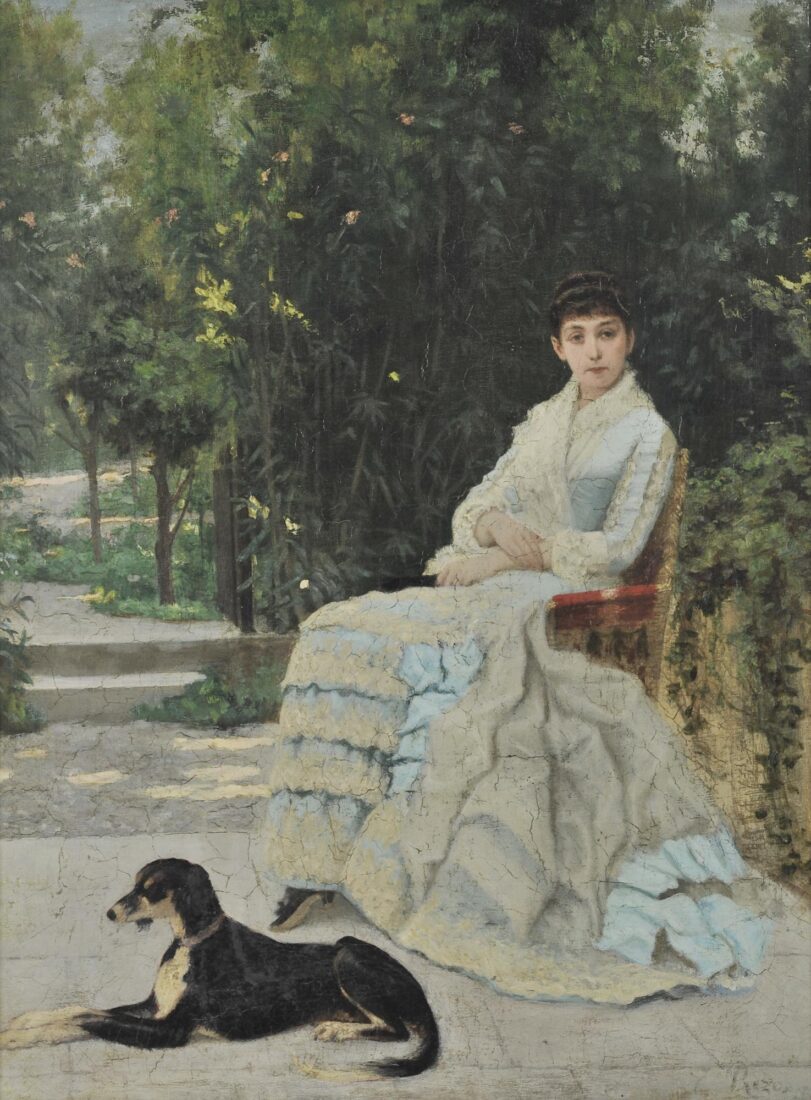

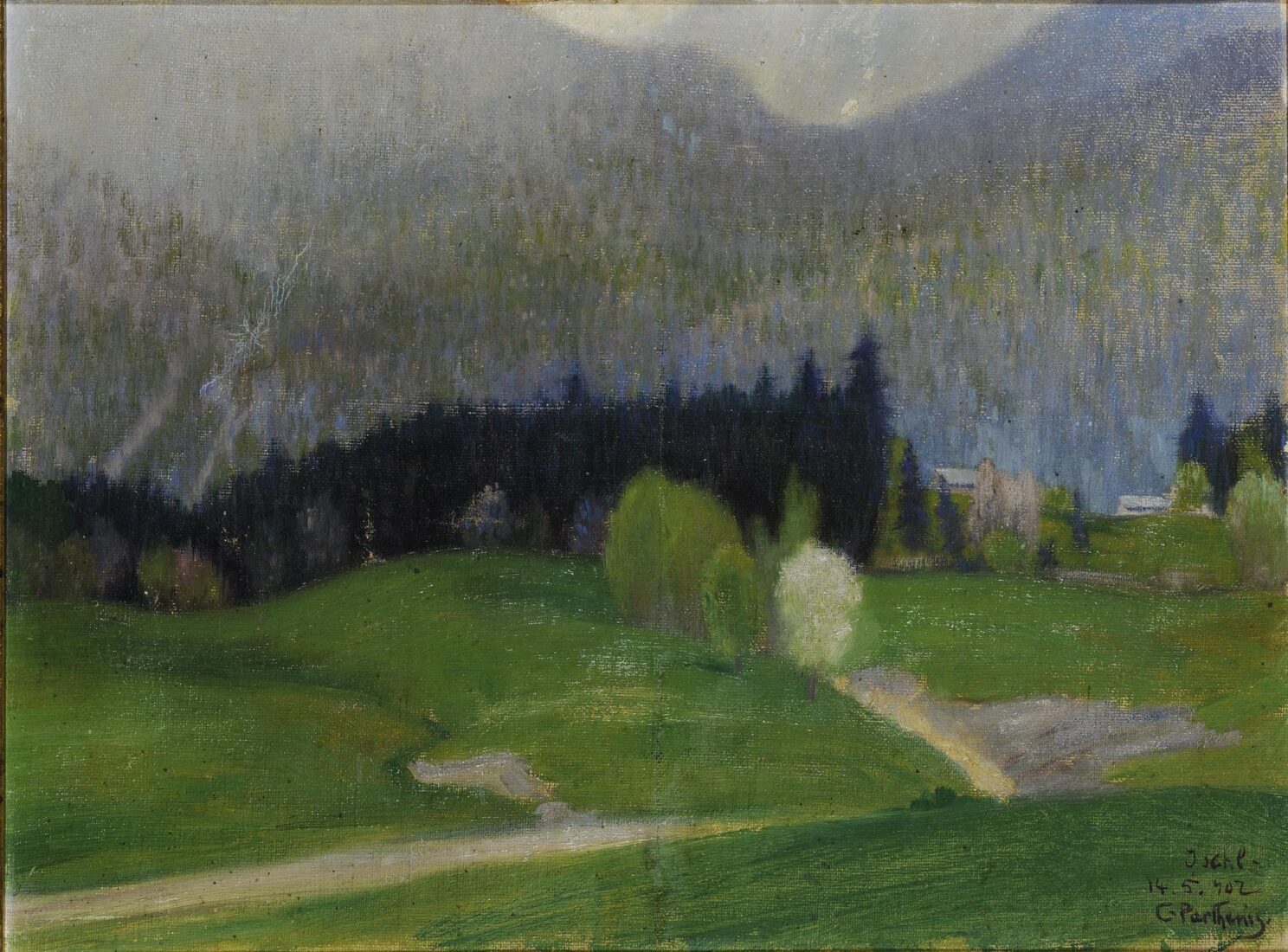
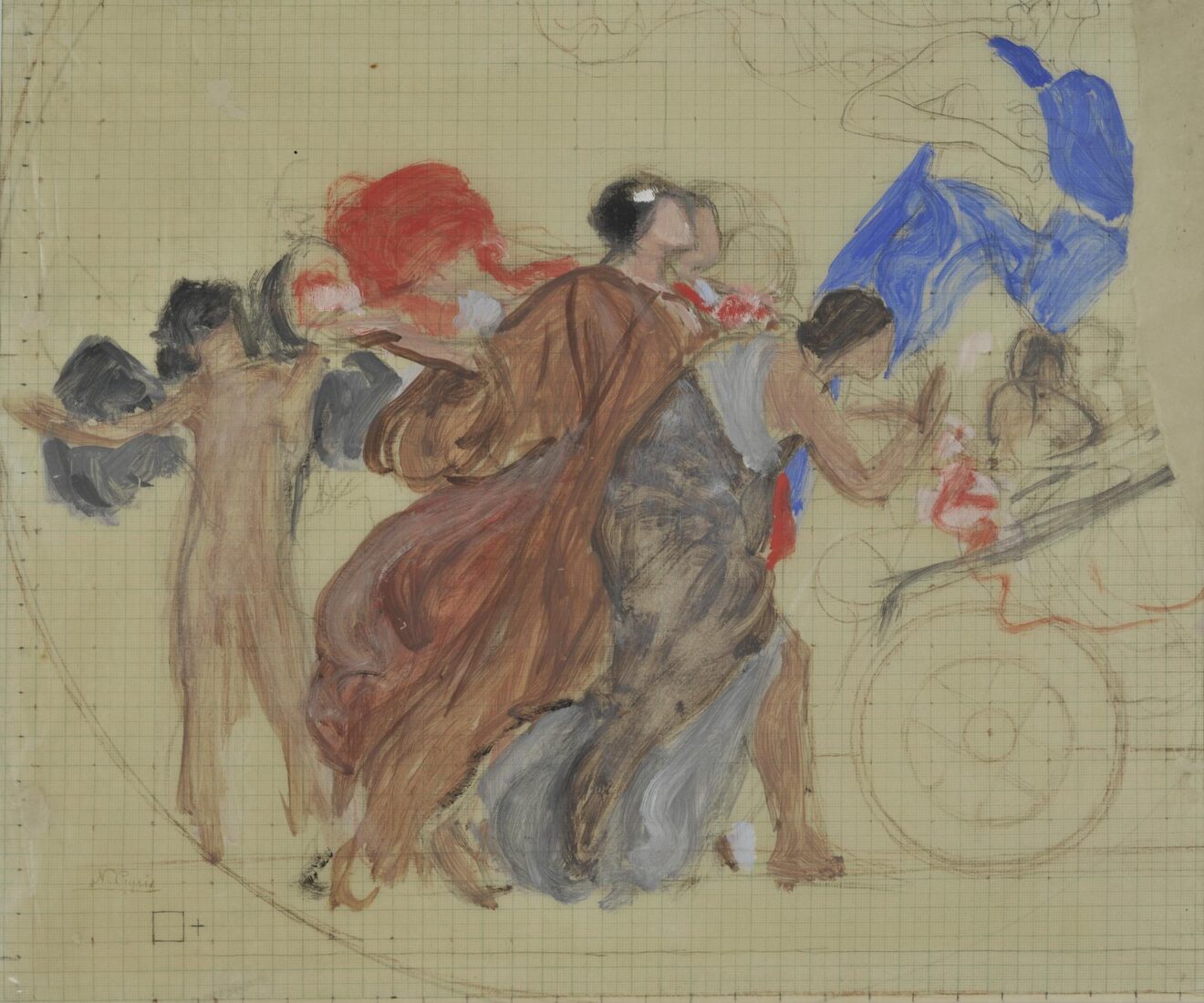
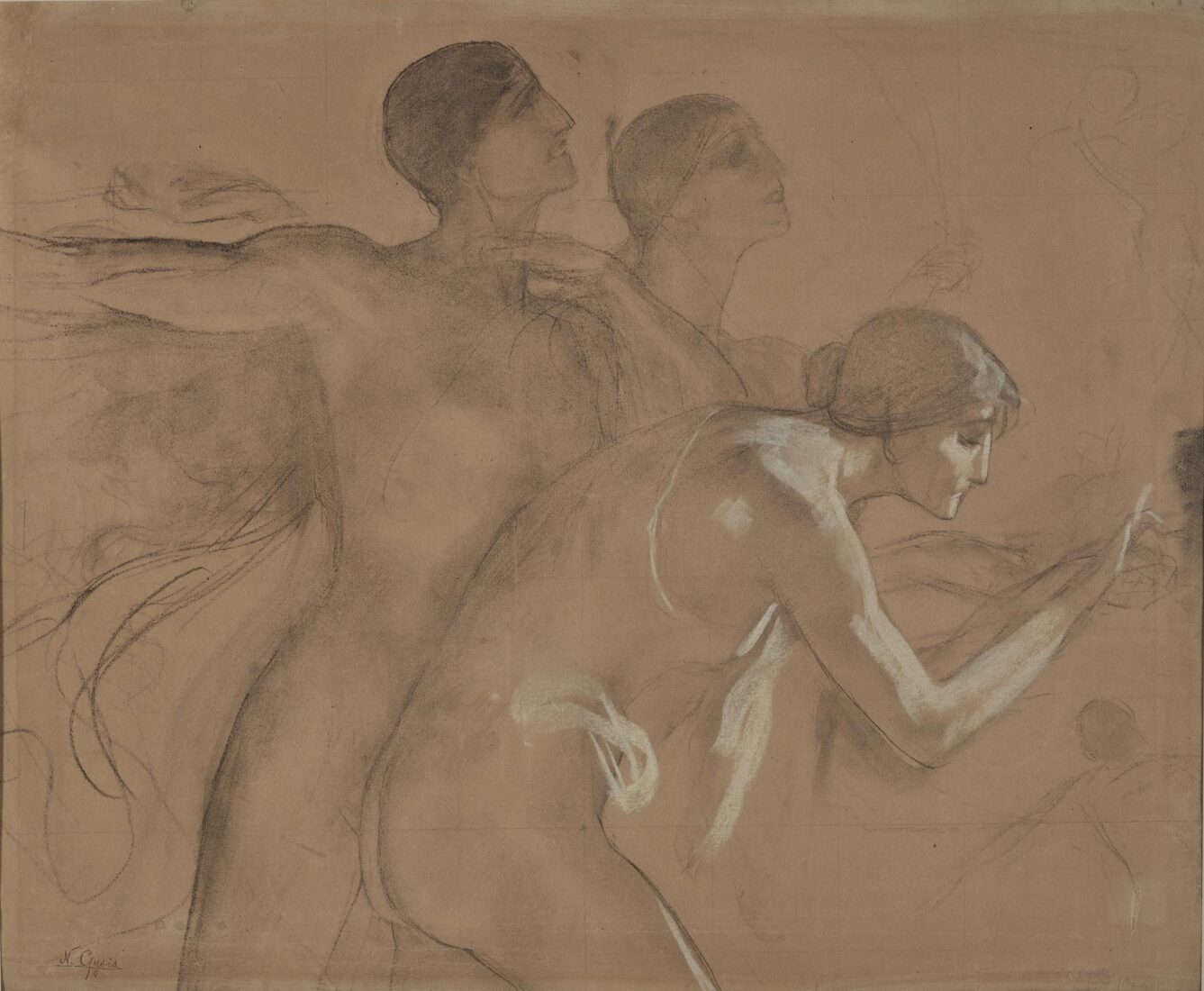
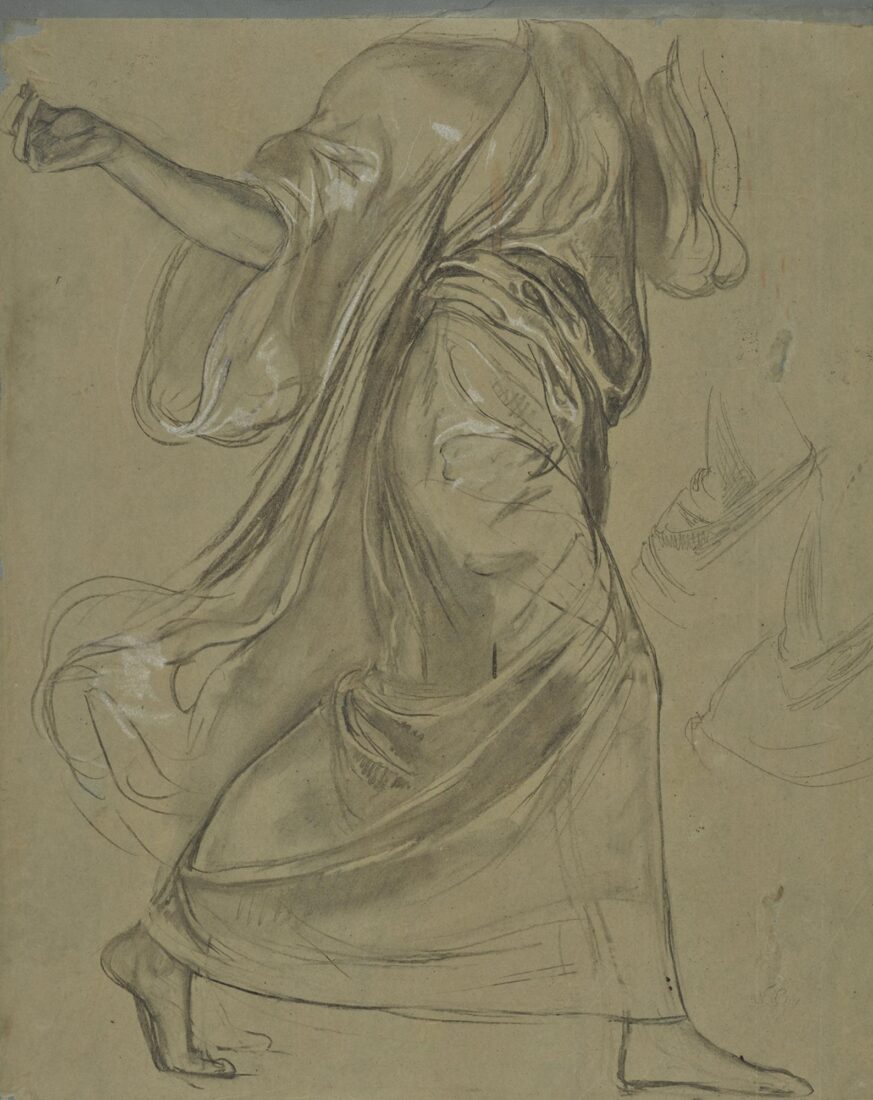
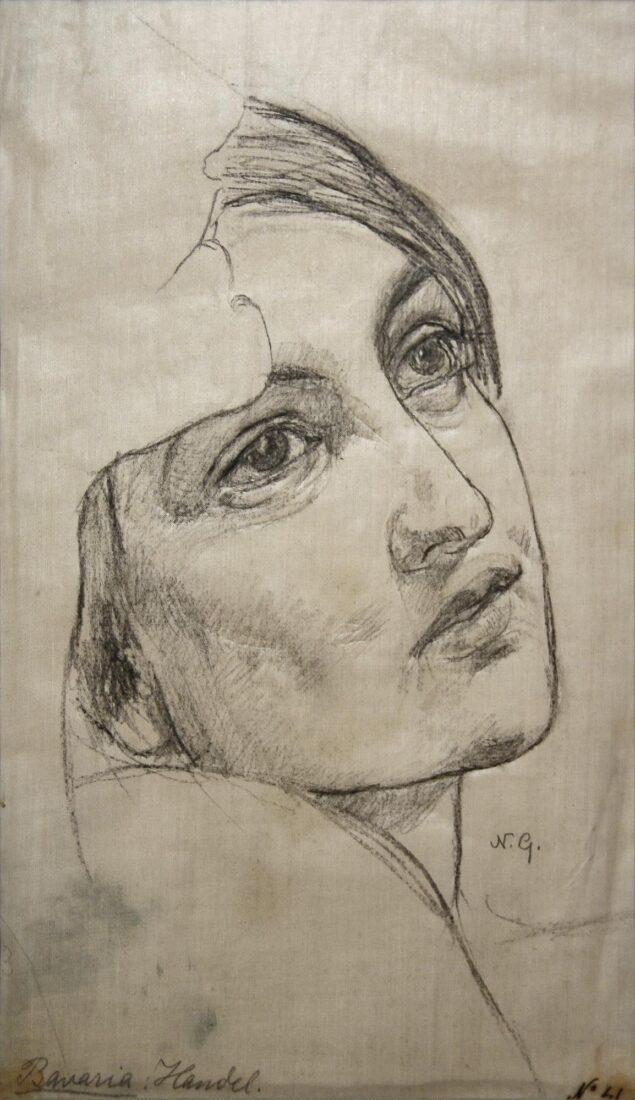
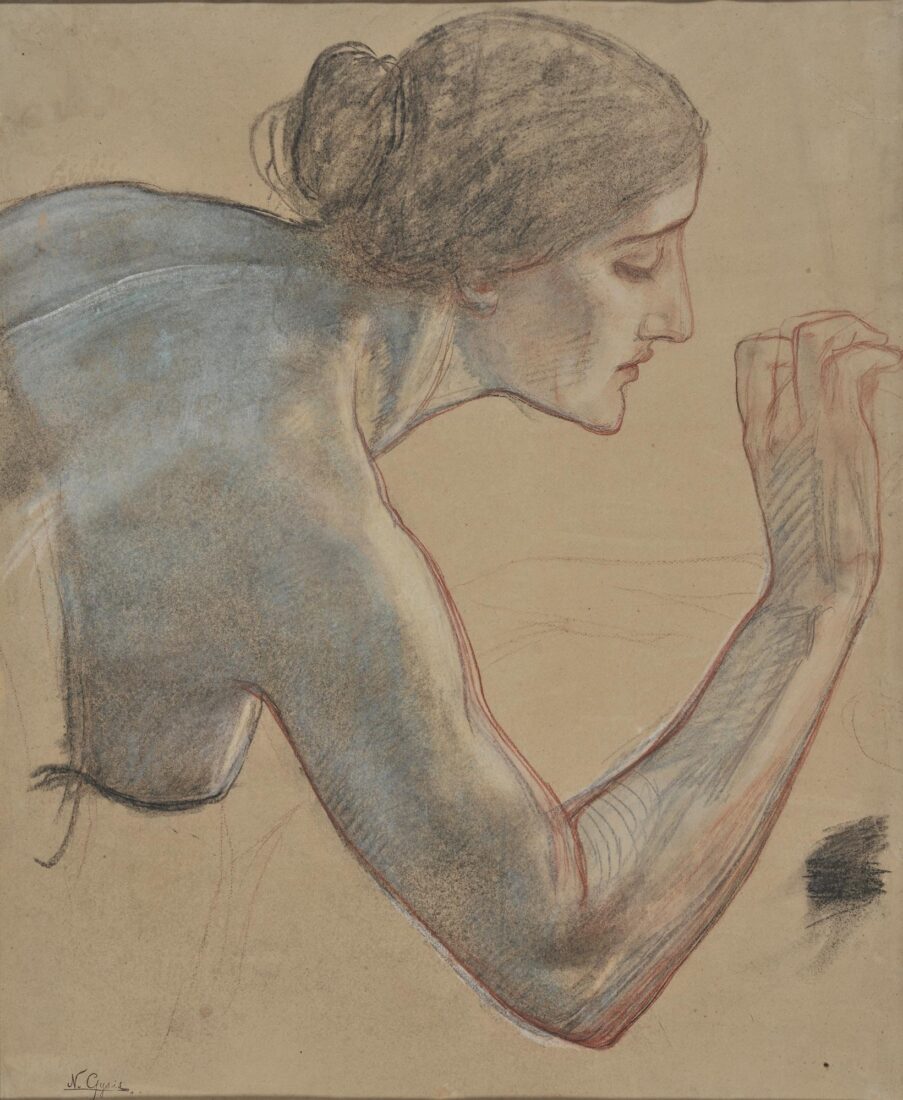
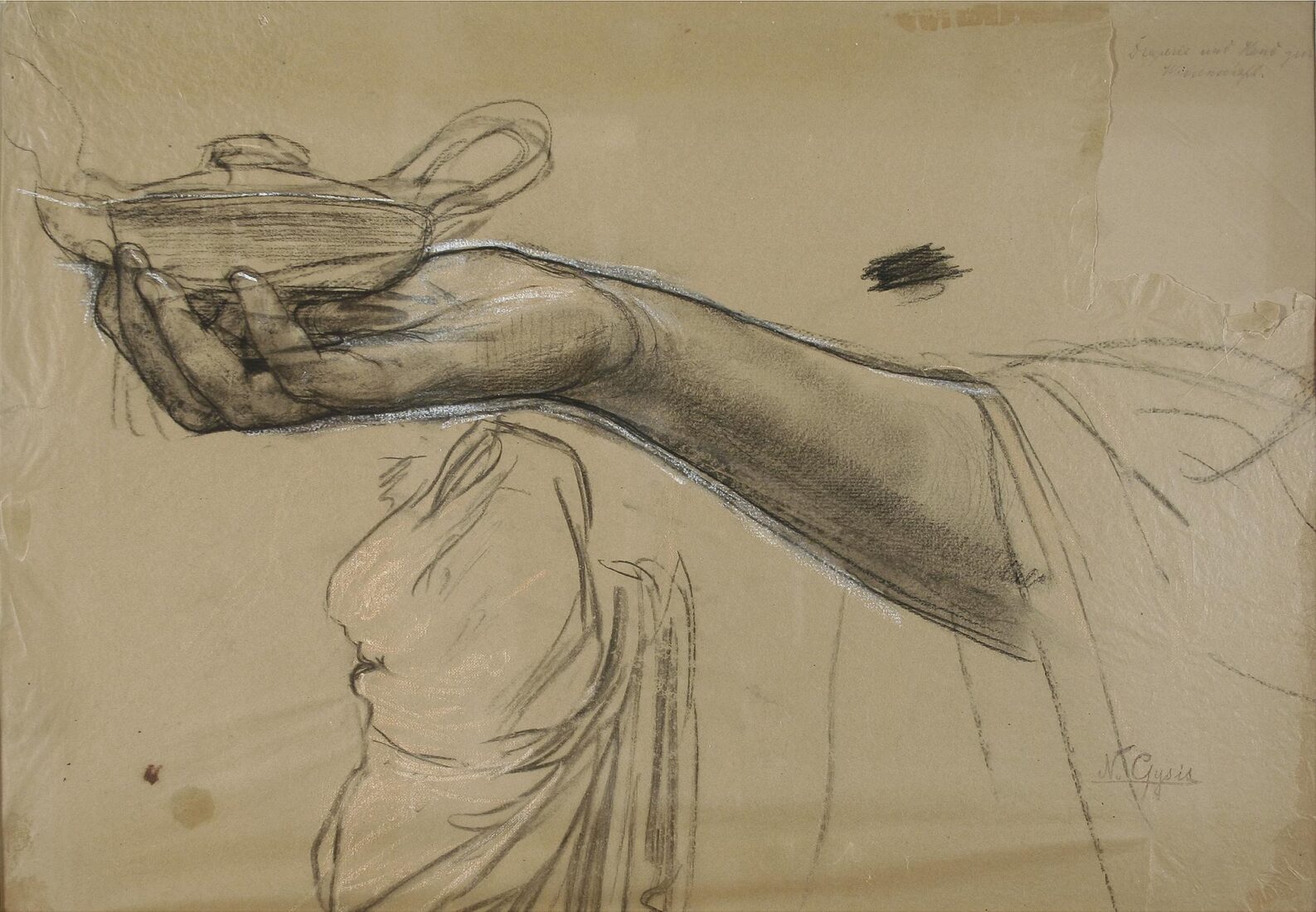
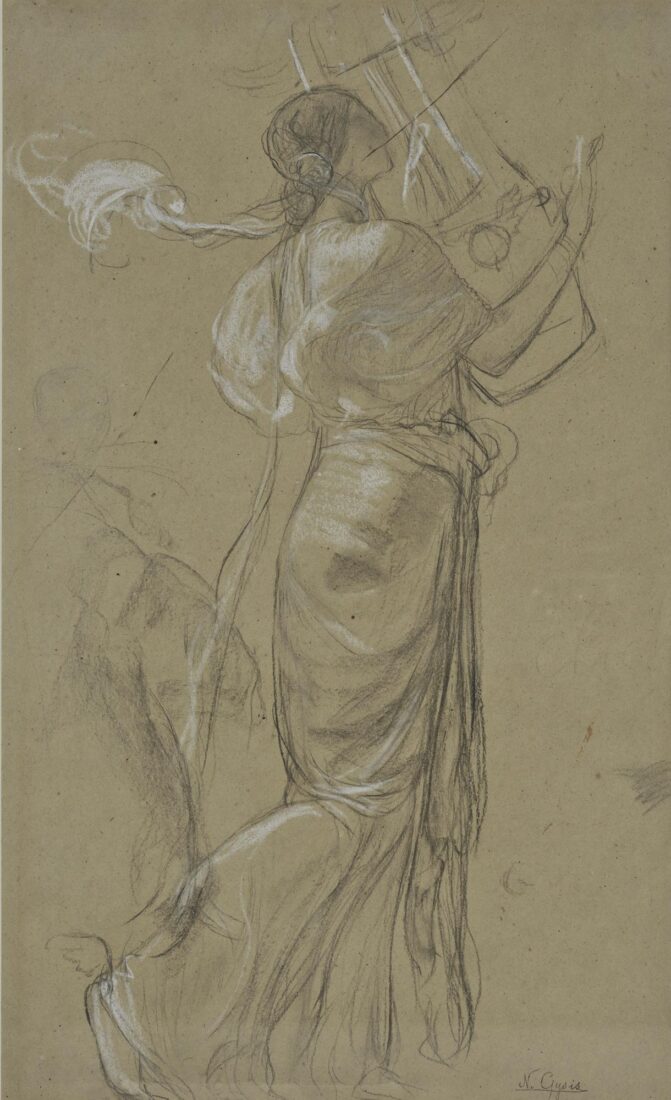
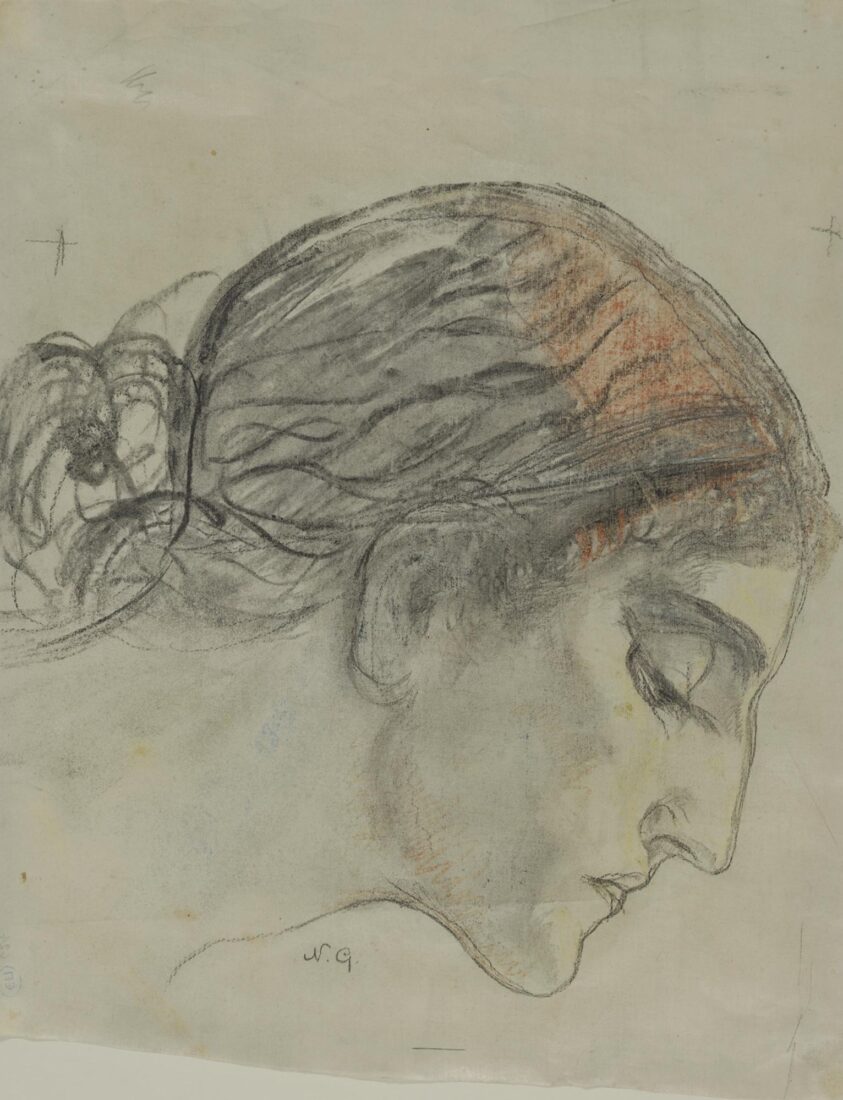
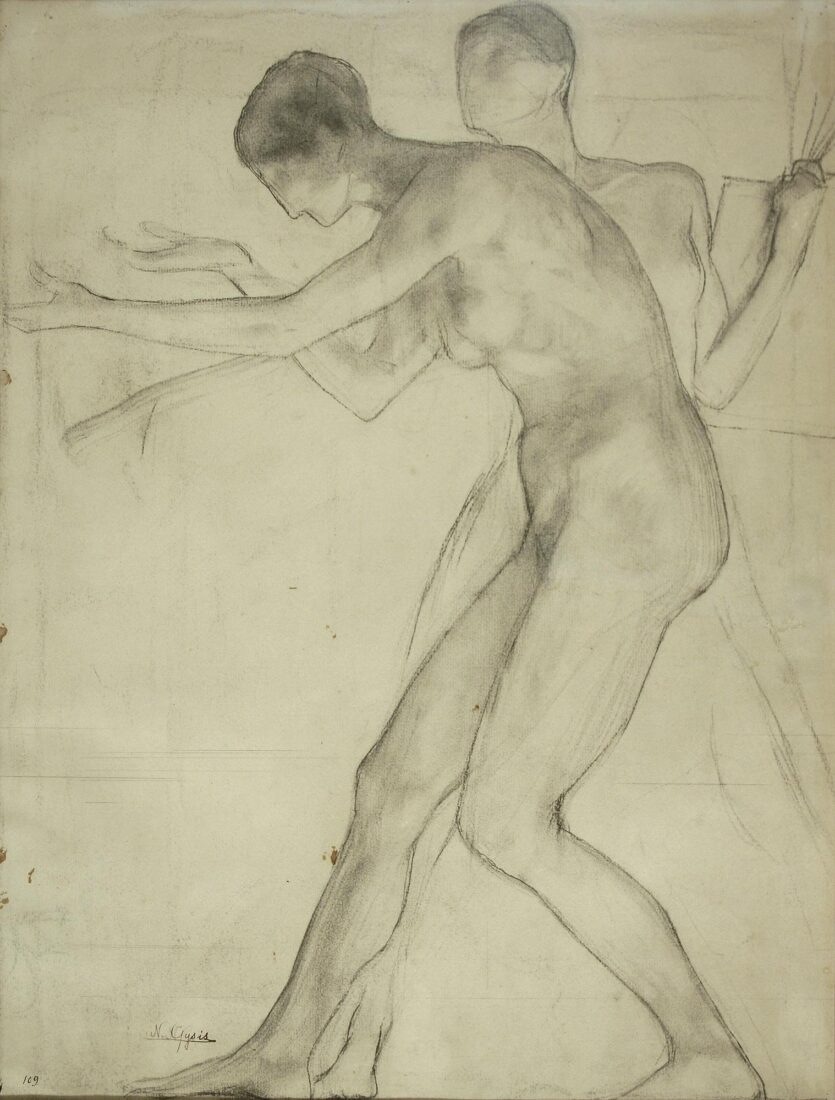
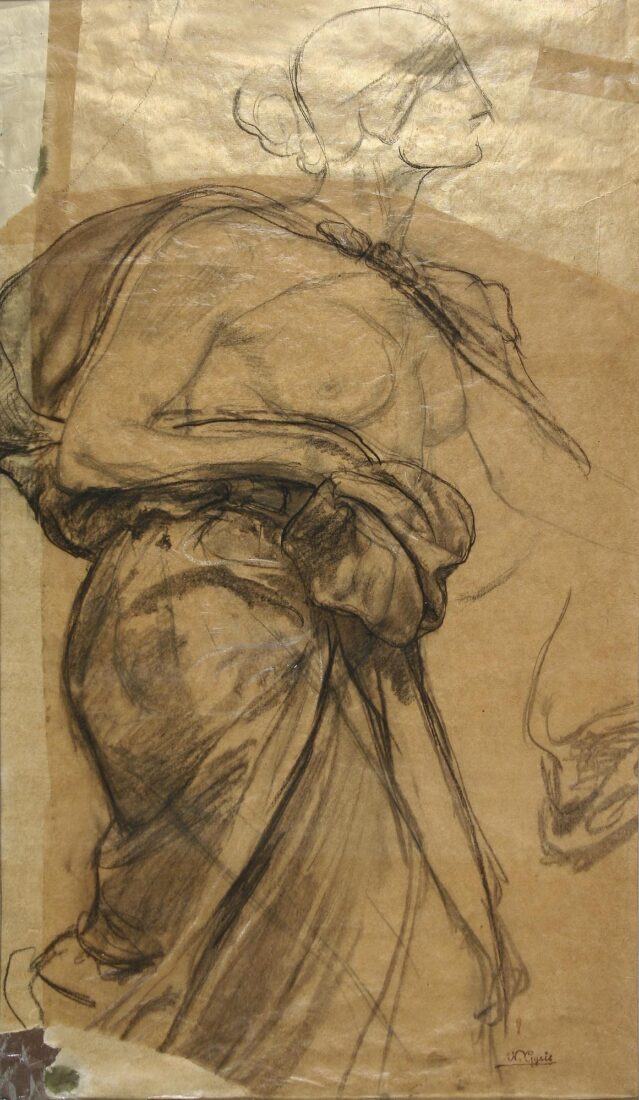
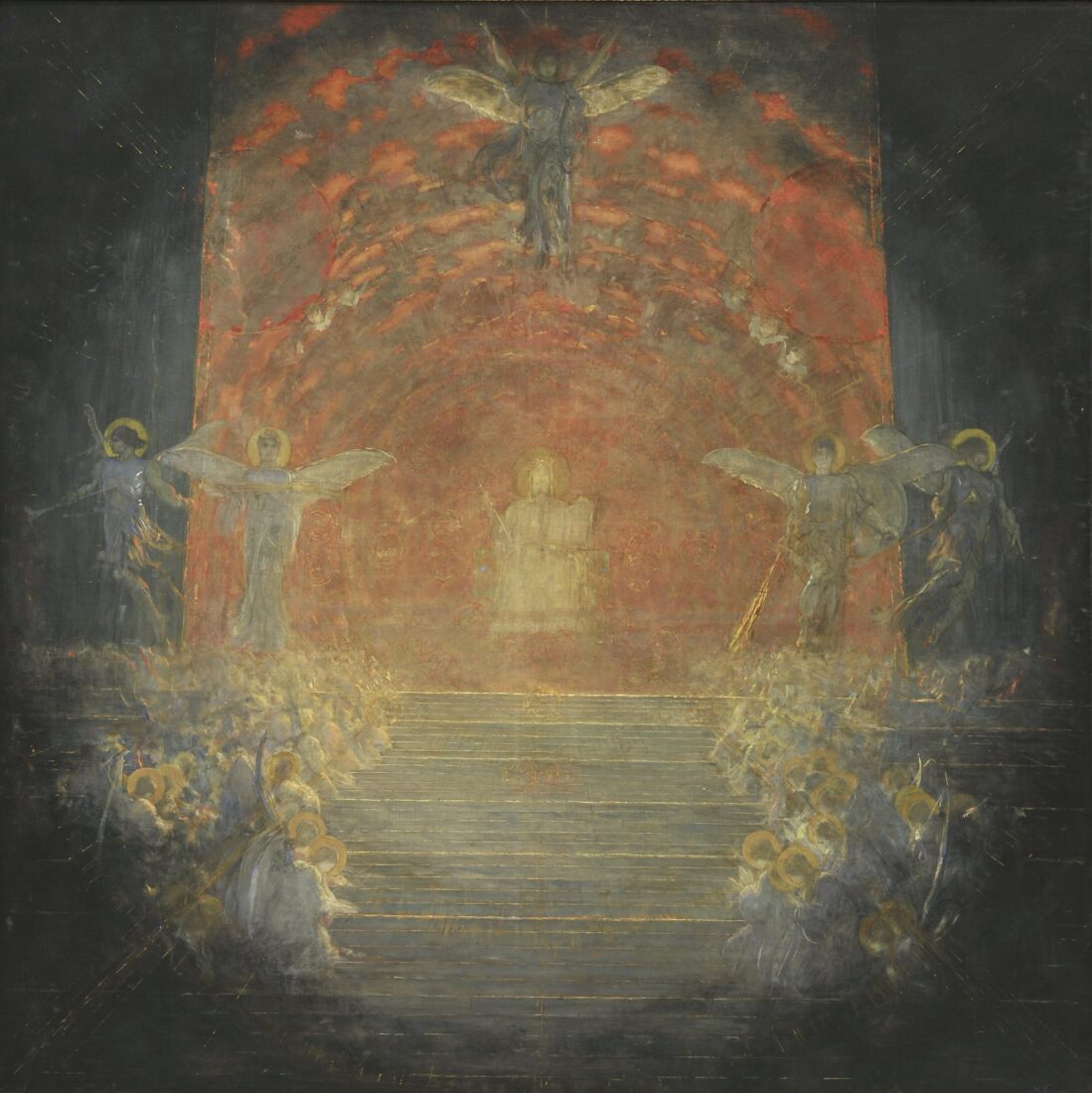
Great painter Nikolaos Gyzis had strong religious and metaphysical feelings and questions in the latter part of his life. It is in this context that the magnificent, transcendental work on the Second Coming was born. The artist did many studies in preparation for this work. Some of them, verging on the abstract, their protagonist being the light, are on display adjacent to this work. Christ appears on the throne, illuminated against a golden-purple background. Golden clouds form homocentric circles around him. Golden rays emanate from the figure of Christ across the entire work. The Coming of the Saviour is heralded by four angels with trumpets, while Archangel Gabriel is flying above on the top of the composition. Myriads of angels are kneeling on the great staircase which frames the scene, leading to Christ, celebrating his coming. The work is also inspired by the Apocalypse of St John, but Gyzis, as he wrote in a letter, did not see Christ as a punisher and avenger, but as a sweet god who came to bring to the world light, salvation and comfort.
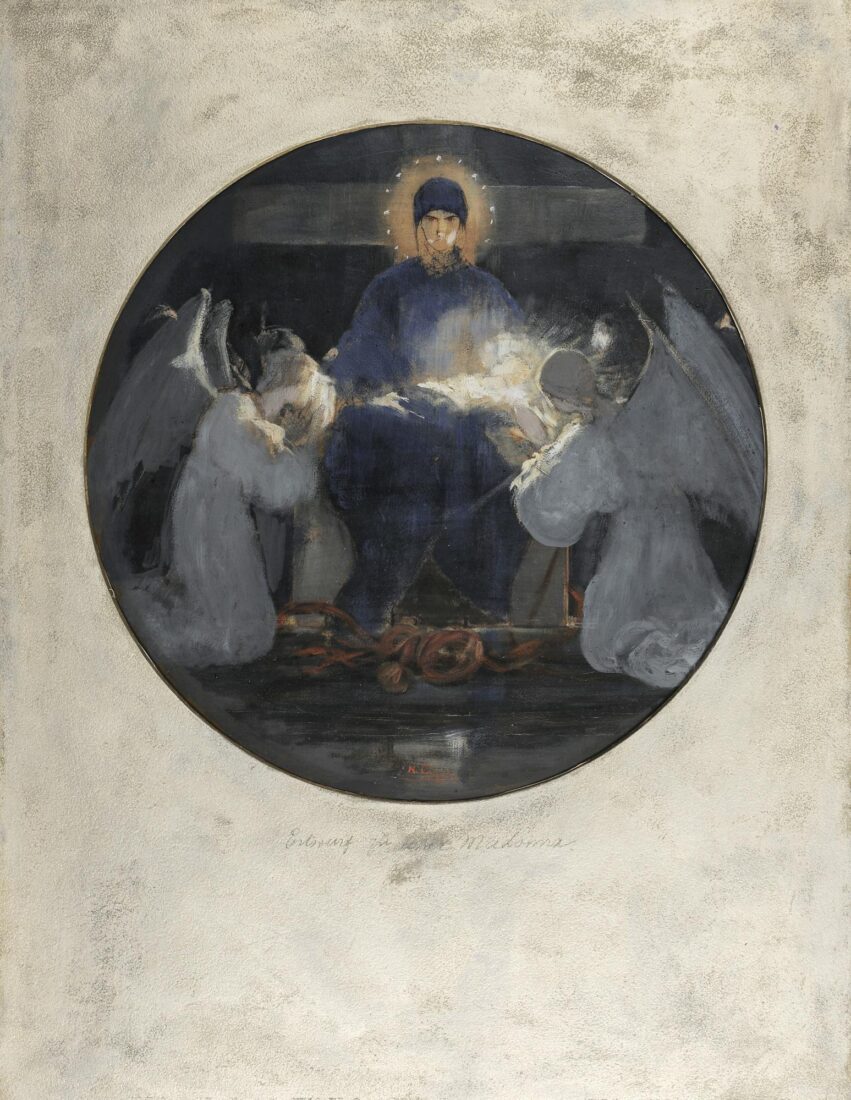
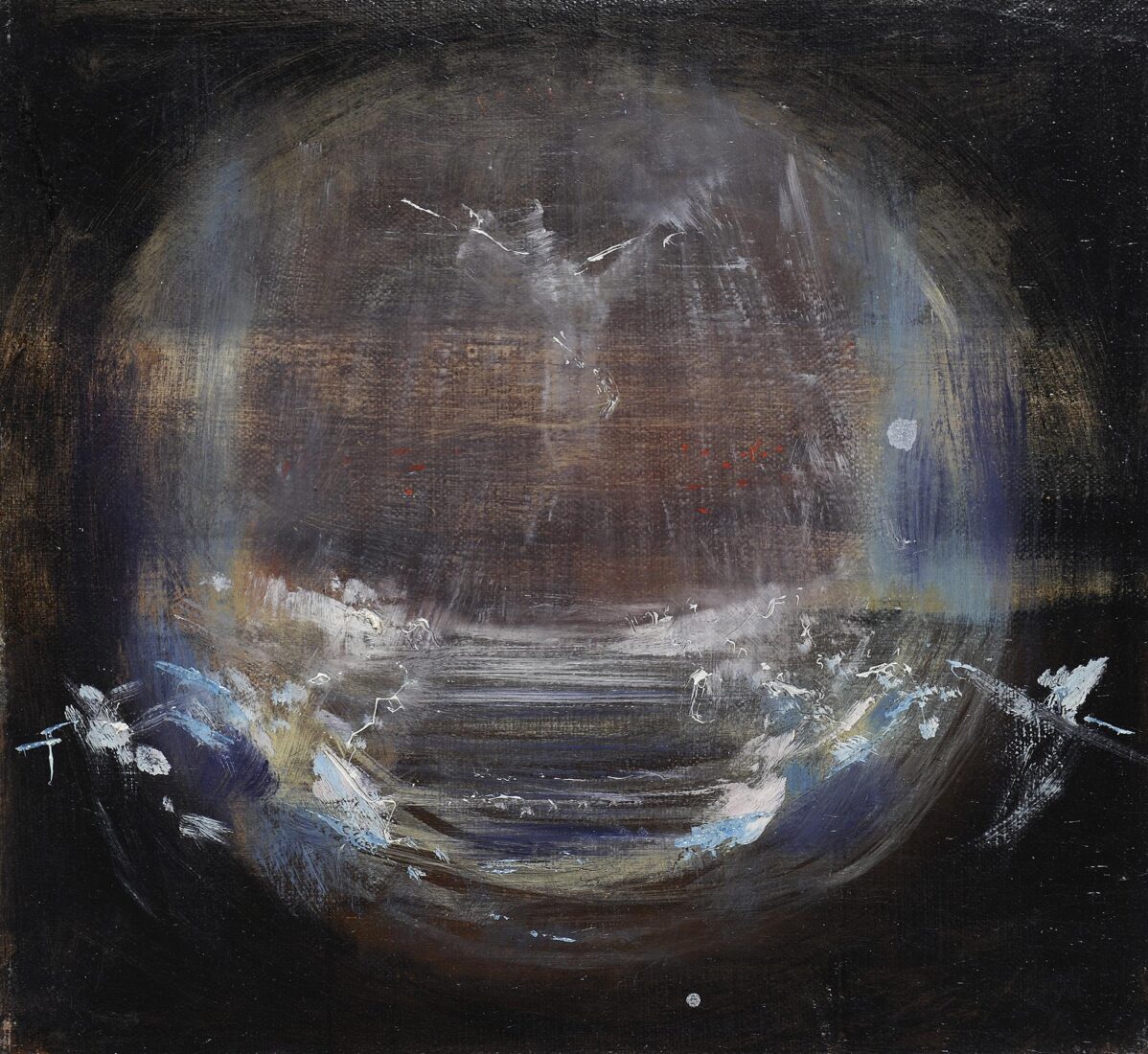
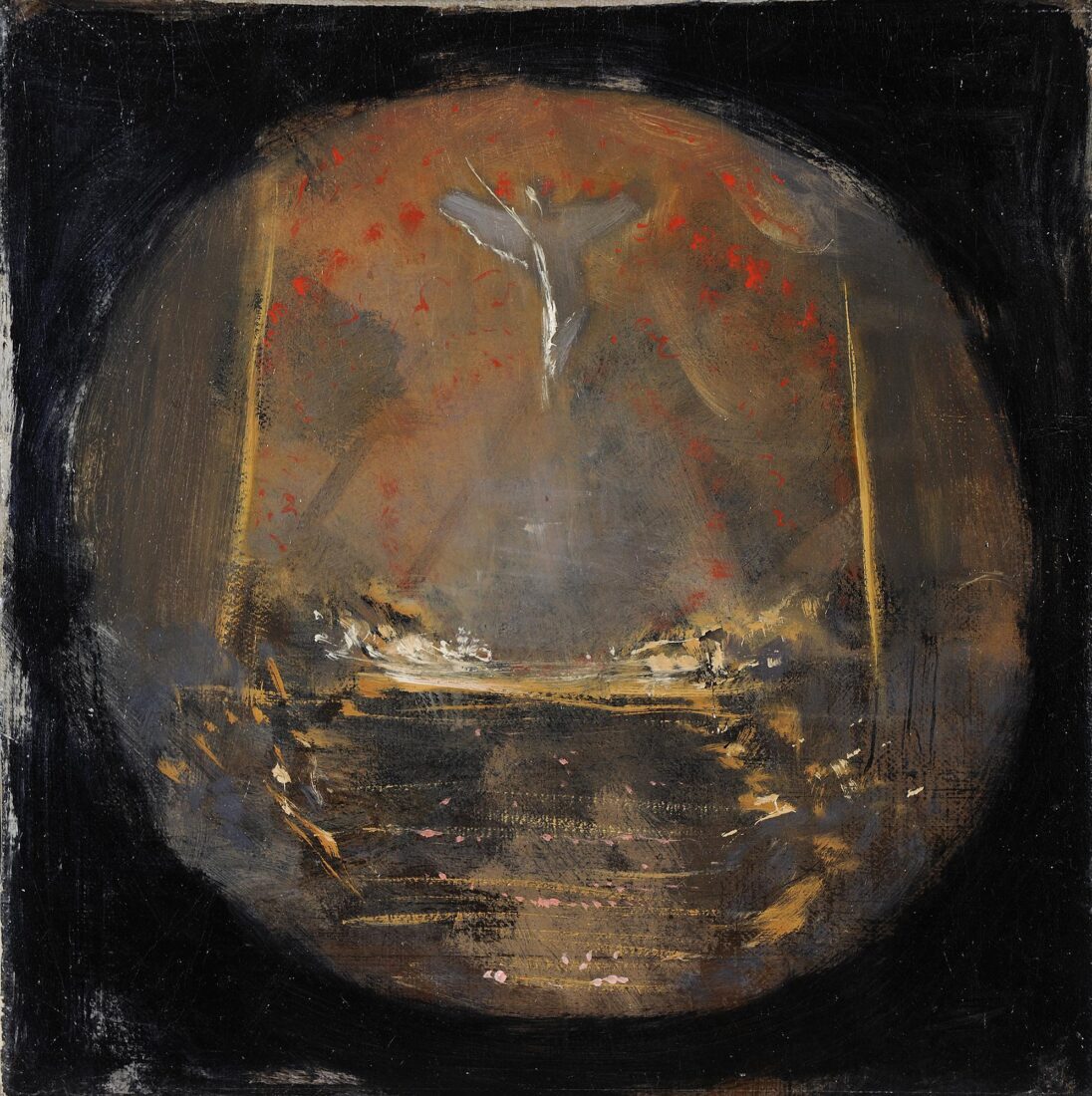
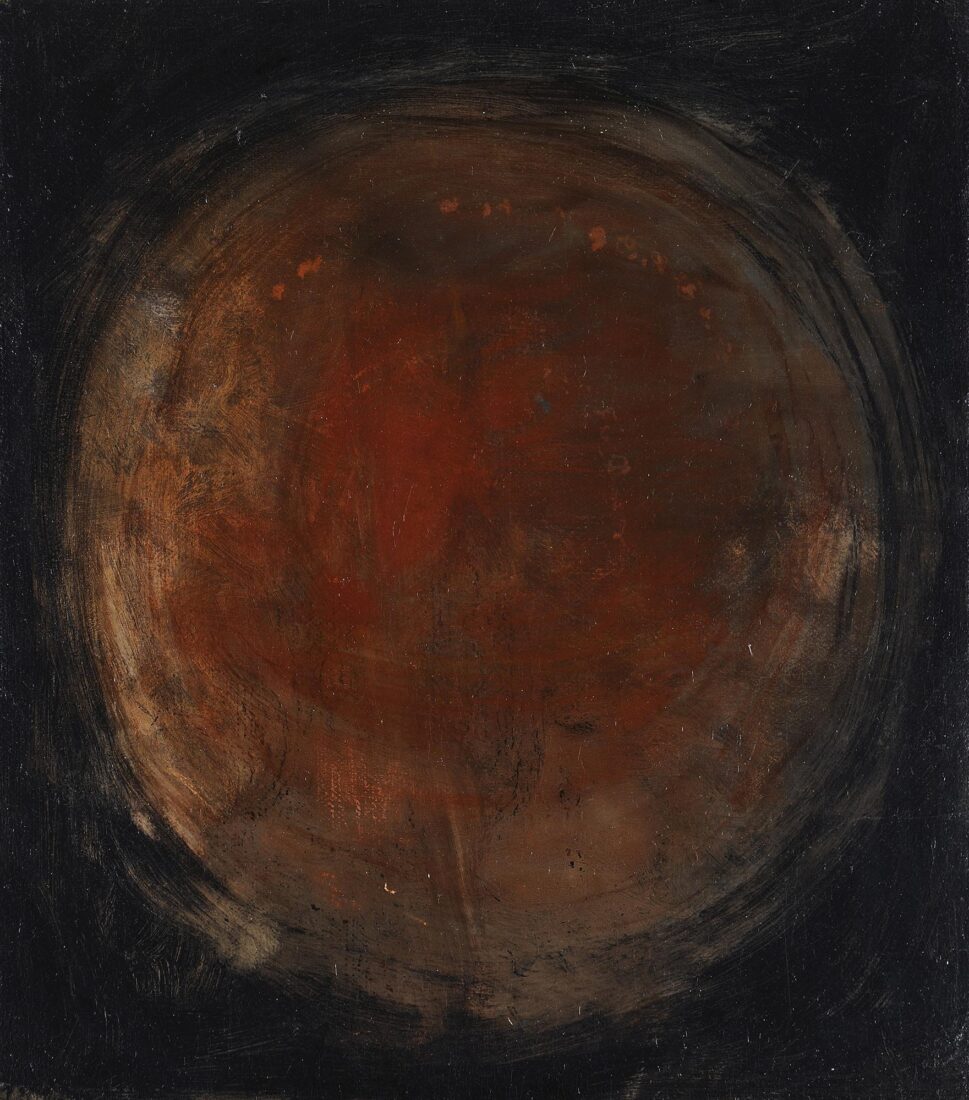
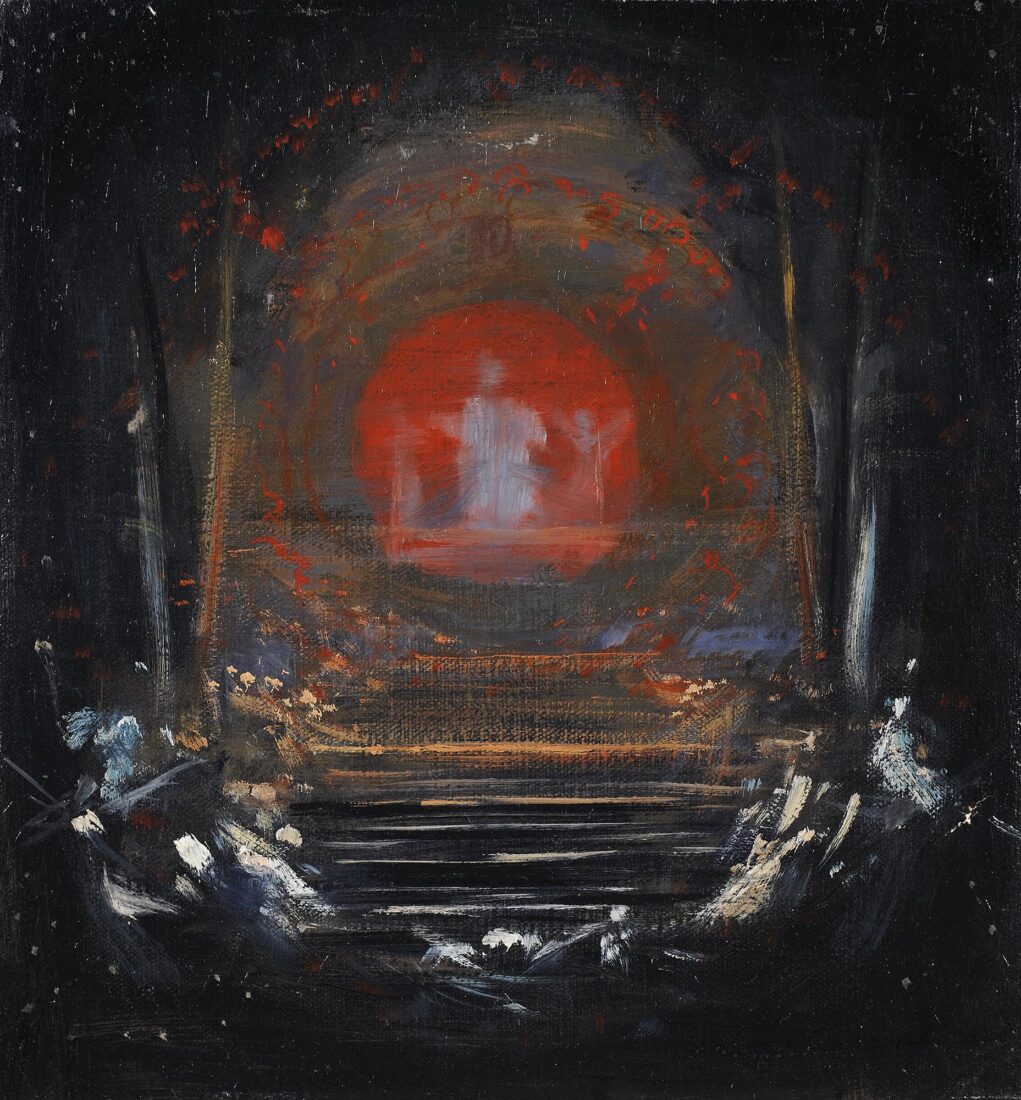
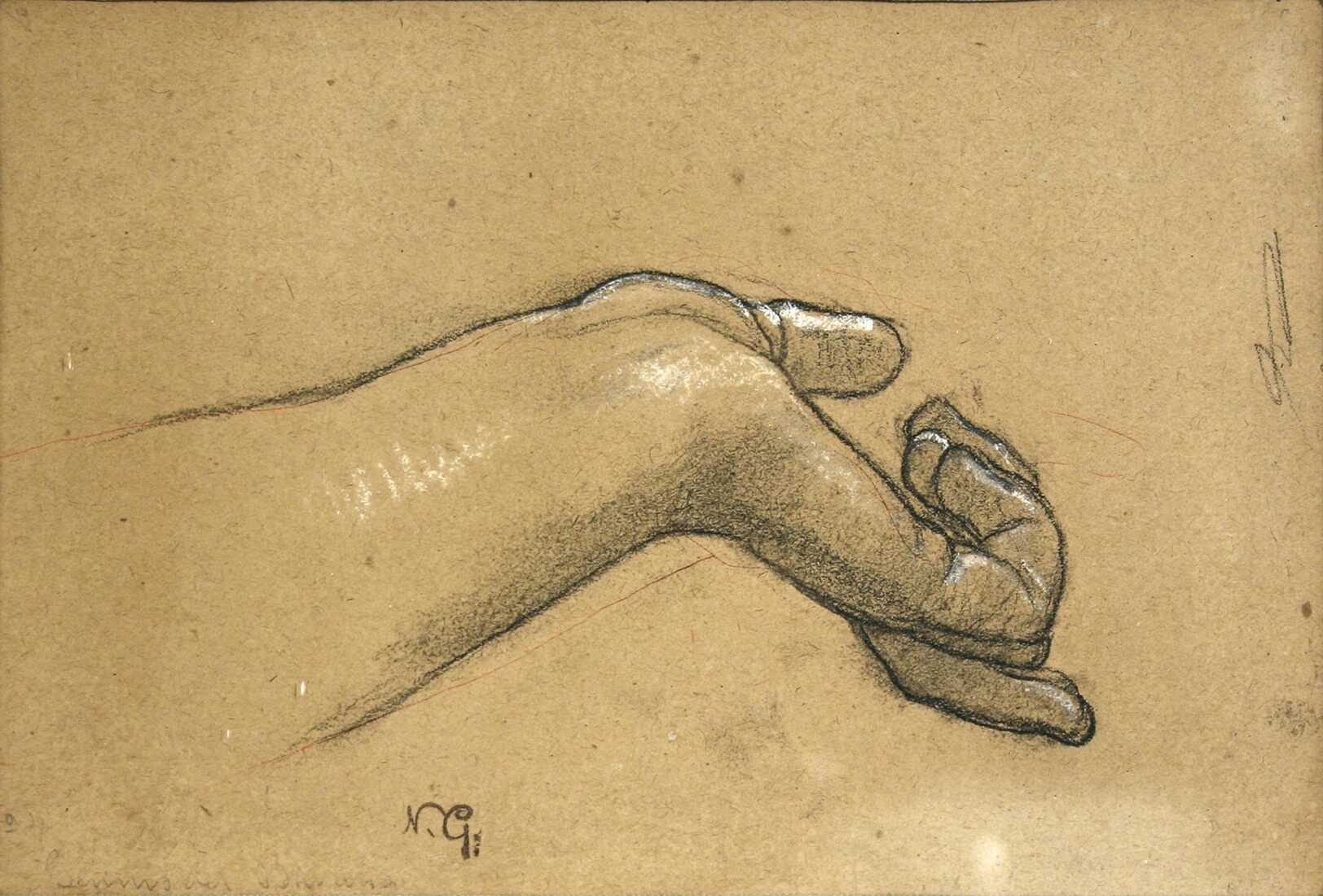
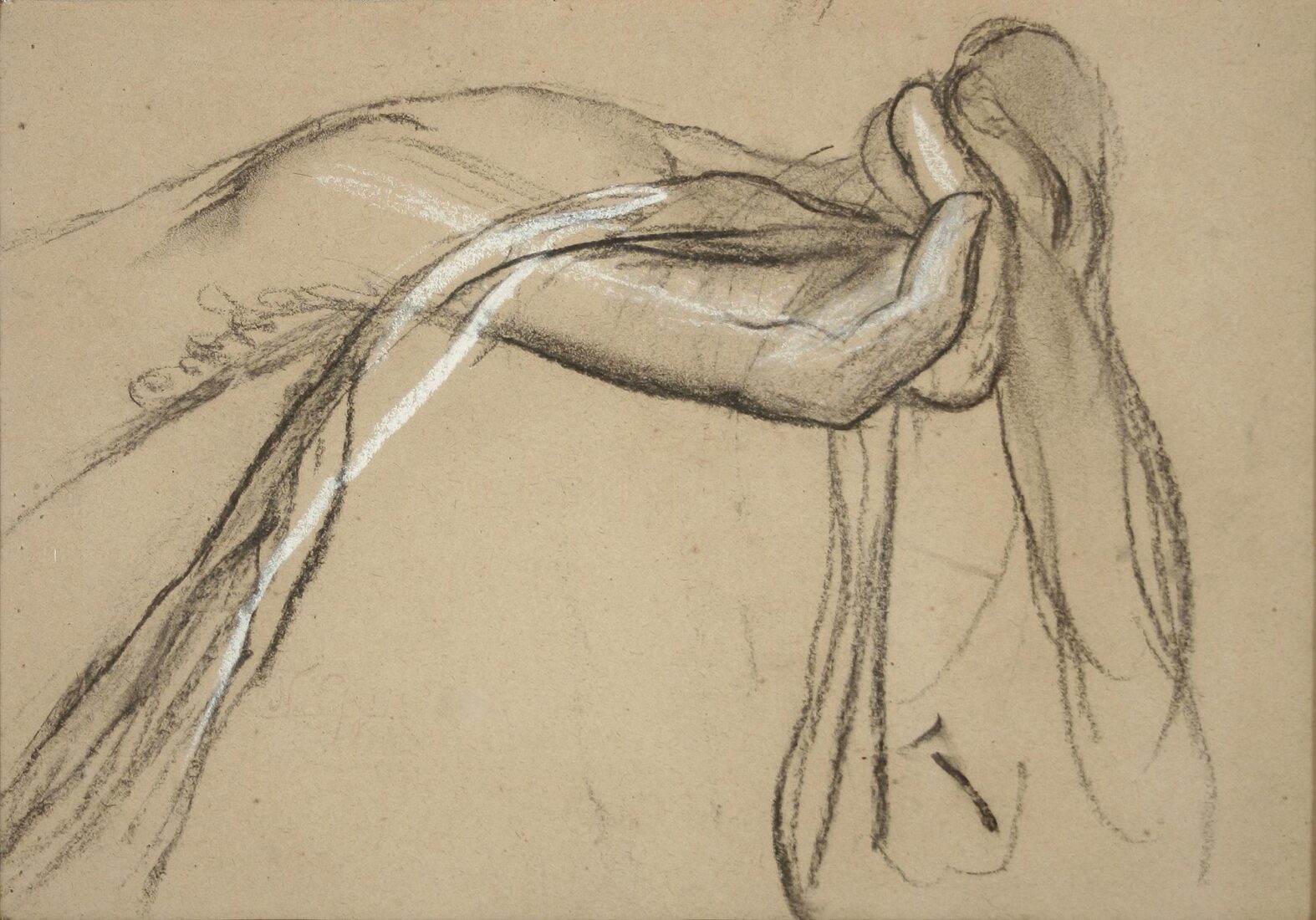
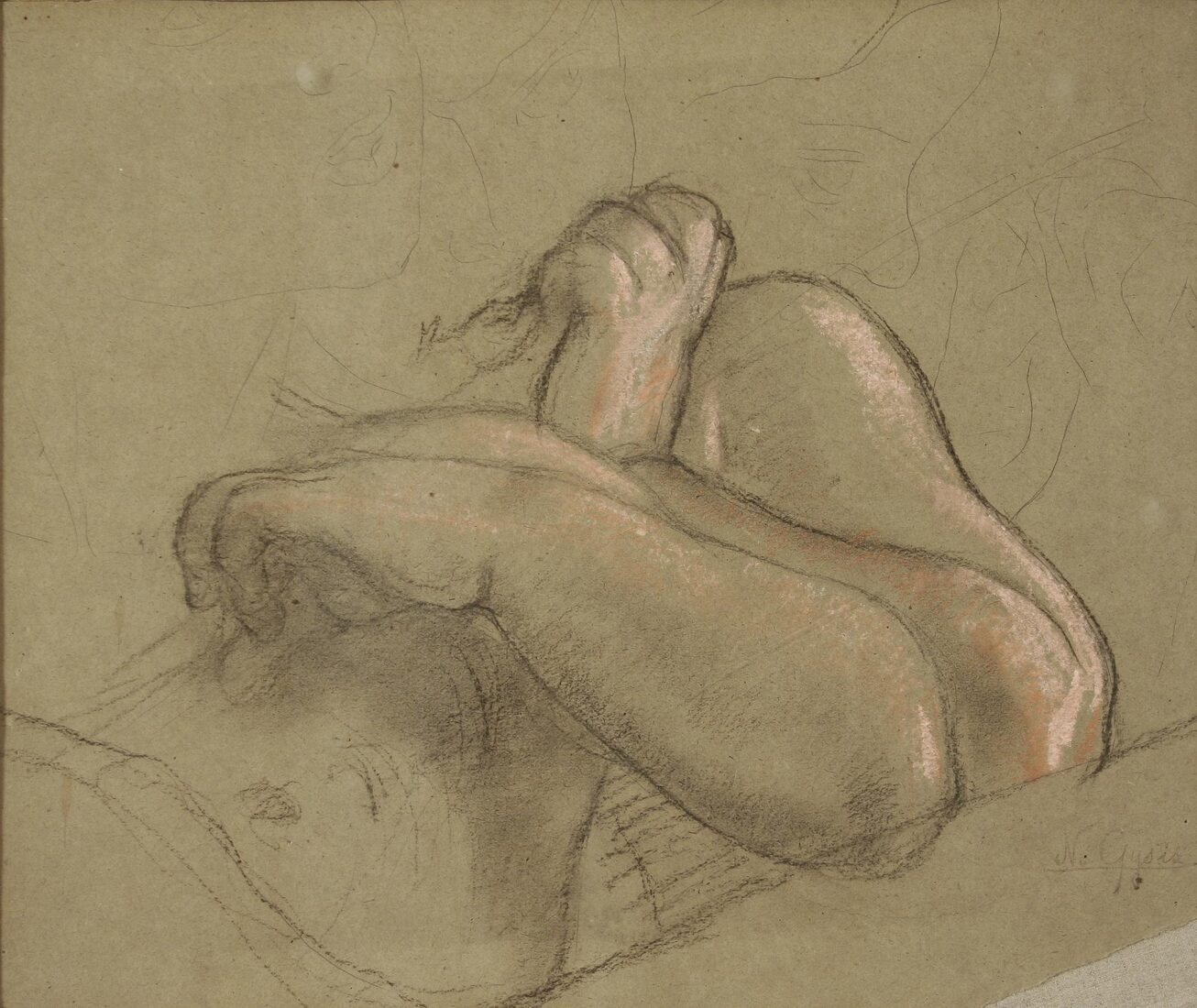
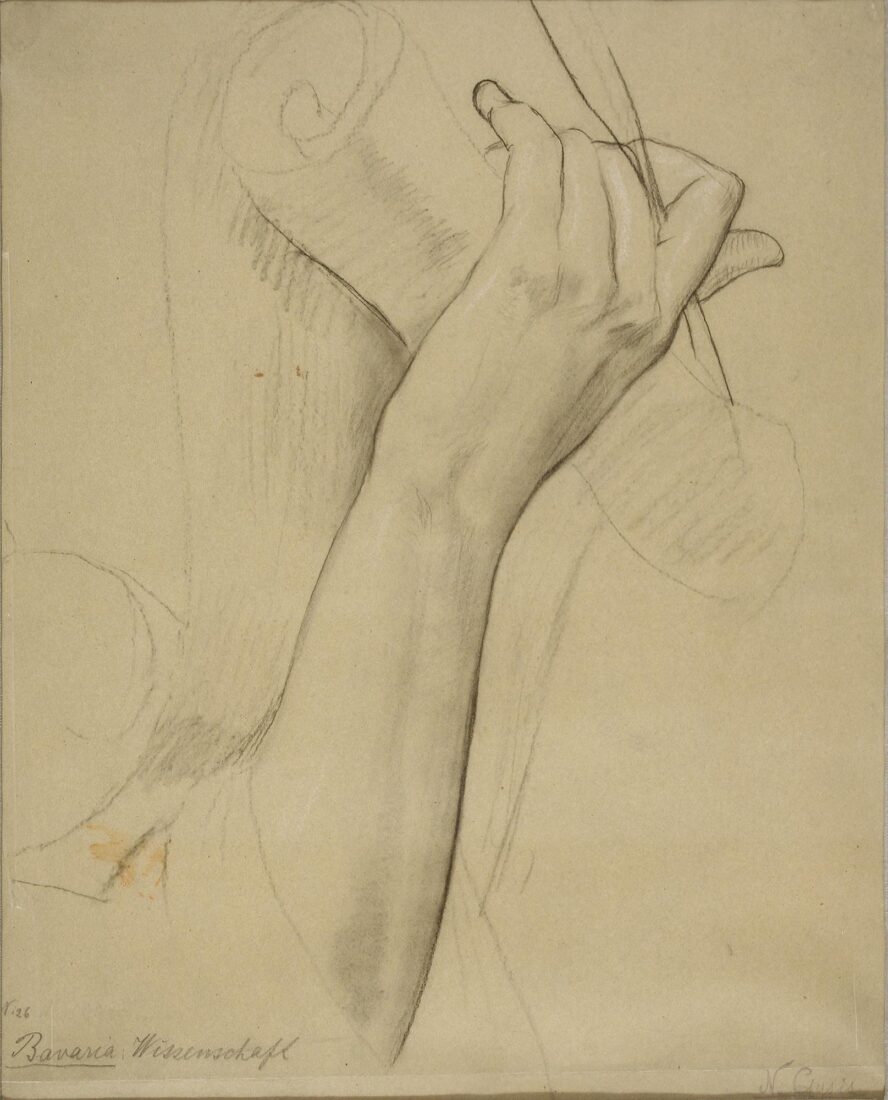
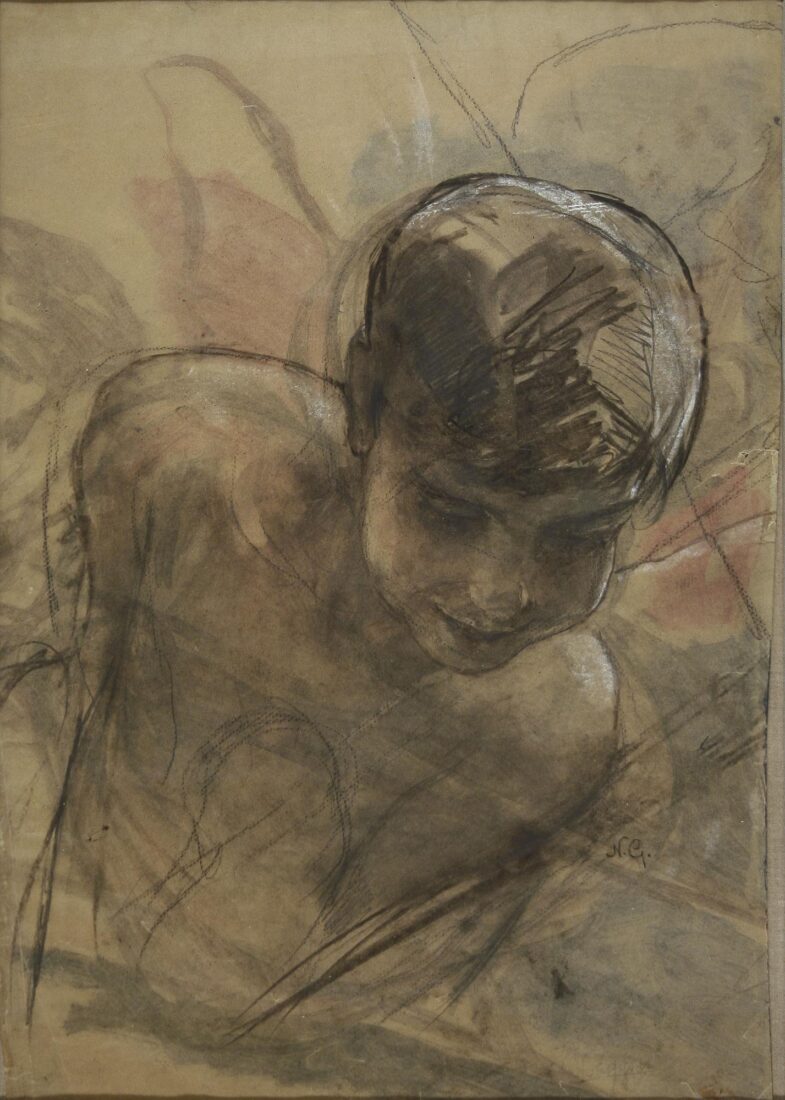
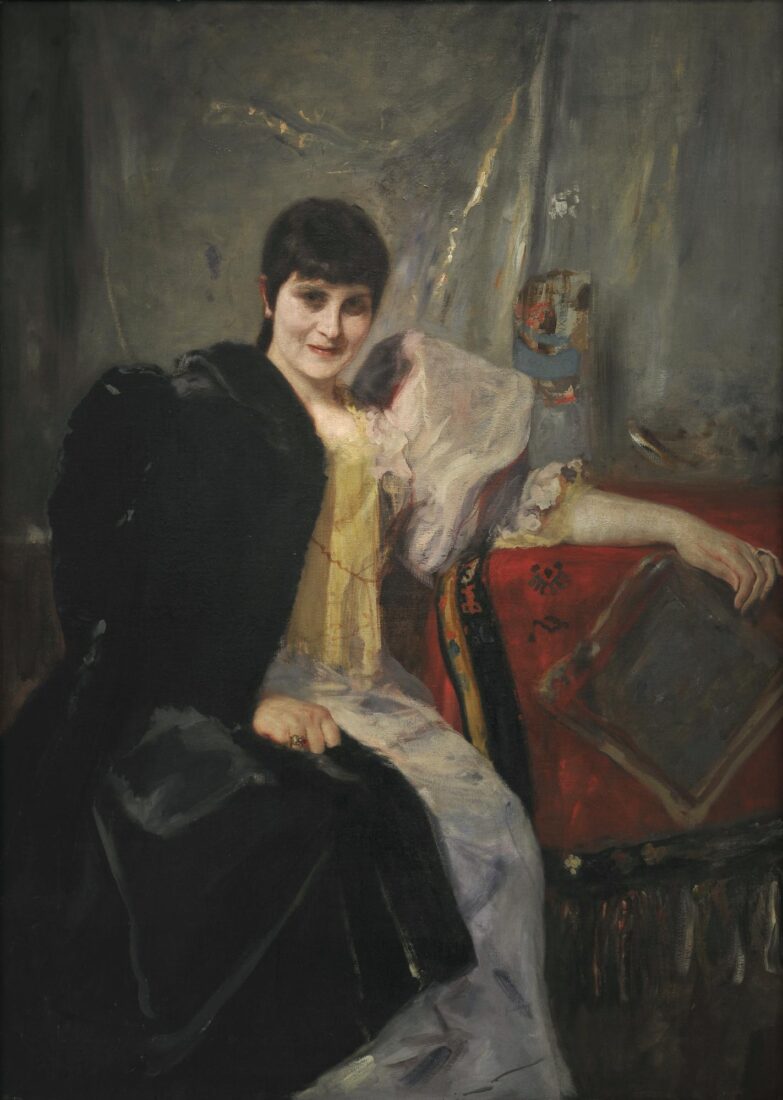
Free from the limitations imposed on him by his patrons, an artist who enlists members of his family as his models often expresses the inherent desire of his art. This bold portrait Gyzis made of his young and beautiful wife, Artemis Nazou, in 1890 is an example in question. The artist portrayed his wife seated, in a spontaneous pose, her one hand resting on a table, laid with a precious red table cloth. Her white silk dress is covered on the right-hand side with a brownish fur with purple tones, which the woman has put around her shoulders. Her smiling face is leaning slightly, creating shades in which the eye sinks into a reverie of darkness. The work has been painted with extreme freedom, luscious multiple-layer glaze coats and extraordinary boldness in colour.

